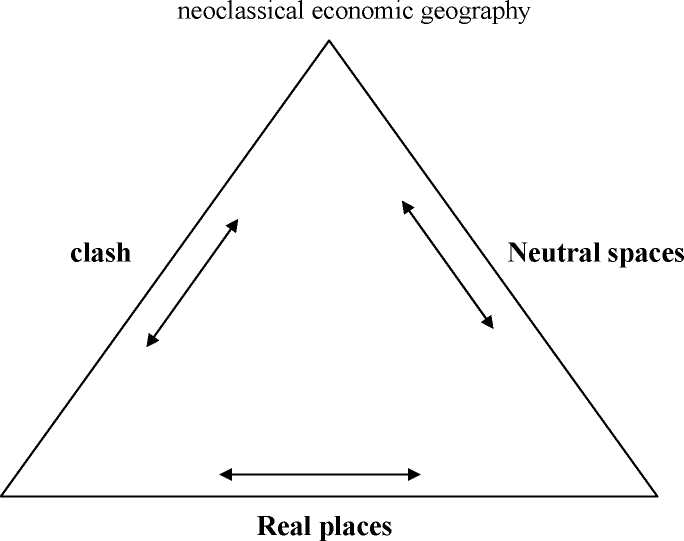examining how uneven spatial distributions of economic activity emerge in a path dependent manner from
these neutral spaces. Thus, although the precise modelling techniques and underlying theoretical
assumptions greatly differ, both evolutionary and neoclassical approaches of economic geography stress
the use of formal models explaining how regional differences come about. Note that this research
questions differs from comparative institutional analysis, in which the regional differences are explanatory
factors rather than the issue to be explained.
Whereas evolutionary economics shares the methodology of formal modelling with neoclassical
economics, it does not share the main theoretical assumptions underling neoclassical models. Rather,
Evolutionary economics has introduced an own set of assumptions, each of which replaces a core
assumption of neoclassical economics (heterogeneity instead of the representative agent, Knightian
uncertainty rather than perfect information, satisficing rather than maximisation). In this view, the specific
set of institutions that agents are subjected to also affect their behaviour and success. These institutions
operate both at the micro-level, as reflected in the central concept of routines guiding firm behaviour, as
well as at the macro-level, as reflected in the concept of innovation systems for example. Thus, in line
with the institutional approach, evolutionary economics acknowledges the importance of institutions in
explaining economic behaviour and difference herein between regions (i.e. ‘real places’).
Figure 3. Interfaces within the triangle of economic geography approaches

institutional economic geography
evolutionary economic geography
15
More intriguing information
1. Transfer from primary school to secondary school2. Proceedings of the Fourth International Workshop on Epigenetic Robotics
3. fMRI Investigation of Cortical and Subcortical Networks in the Learning of Abstract and Effector-Specific Representations of Motor Sequences
4. Innovation in commercialization of pelagic fish: the example of "Srdela Snack" Franchise
5. CONSUMER PERCEPTION ON ALTERNATIVE POULTRY
6. Improving Business Cycle Forecasts’ Accuracy - What Can We Learn from Past Errors?
7. Who is missing from higher education?
8. Chebyshev polynomial approximation to approximate partial differential equations
9. The name is absent
10. The Economics of Uncovered Interest Parity Condition for Emerging Markets: A Survey